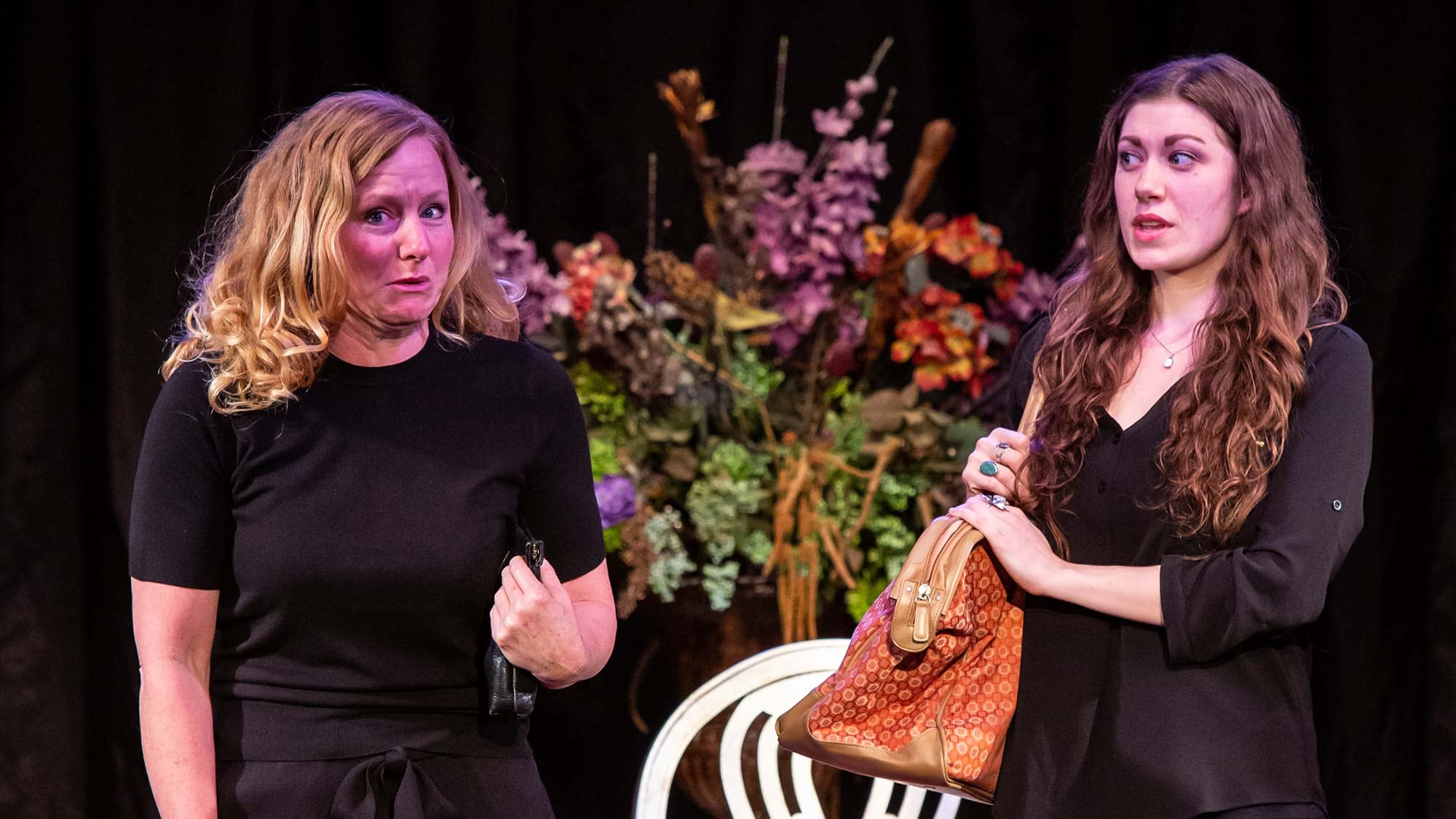Clothes aren't just something you wear in Triangle Productions' Love, Loss, and What I Wore—they're a window to the soul. A black taffeta outfit embodies a woman's childhood. A beige pantsuit is linked to a child's death. A pair of boots evokes the memory of a sexual assault.
Some playwrights might have struggled to make sense of the idea that hats, dresses and even purses can be an extension of our inner thoughts. But Love, Loss, and What I Wore was adapted from Ilene Beckerman's memoir by Nora and Delia Ephron, who looked at the source material and seized the opportunity to craft a potent stage dramedy about family, femininity and mortality. The result is a perfect fit for director Donald Horn and his cast, who have skillfully brought the Ephrons' dialogue to self-deprecating, deeply felt life.
Love, Loss, and What I Wore begins with a blond woman (Michelle Maida) in a black dress entering the theater. Her name is Gingy and she quickly plunges into a series of monologues about her life, covering everything from her fiercely demanding mother to her two failed marriages to her relationship with her granddaughter.
Yet the play is not solely Gingy's story. Maida is joined by several actresses—Deanna Wells, Trish Egan, Olivia Weiss and Lisamarie Harrison—who sit with her in a semicircle of golden chairs and play multiple characters, each of whom has her own memories to reveal. Some of these, like an anecdote told by Weiss about trading a purse for a gorgeously garish yellow and blue MetroCard bag, are uproarious. Others, including a monologue in which Harrison plays a character who describes the liberation of donning a tuxedo to marry the woman she loves, are intensely poignant.
These women seem to be everywhere and nowhere. The set, which was designed by Horn, is deliberately spare—it features little more than two maple-colored panels and an impressively overstuffed flower bouquet. The anonymity of the location makes you feel as if these women have been brought together through mysterious or even spiritual means, souls magically united to listen and talk.
Clothes, of course, are the No. 1 topic of discussion—particularly clothes that are tools of empowerment. One of the play's most searing scenes involves a character played by Wells who recalls being diagnosed with breast cancer and being told, "Whenever you go to the hospital, look fabulous." Taking that principle to heart, she cultivates a collection of ball caps made from a dizzying array of materials—black suede, brown velour, crushed velvet—and wears them not only as a fashion statement but as an act of defiance.
A similar theme emerges when one of Weiss' characters vividly and giddily describes wearing short skirts and boots at Berkeley, only to confess that she ditched the skirts after being raped in her apartment. "But I kept the boots," she declares, signaling that although she's scarred, she isn't mortally wounded.
Love, Loss, and What I Wore has some of the inherent weaknesses common to plays structured around monologues. While the format allows a quintet of gifted, hardworking actresses to address the audience in a thrillingly direct manner, there are times when you crave more action and interaction.
Yet the performances and the writing never fail to seize your attention, whether you're listening to Egan's deft delivery of a story about one of the characters getting her period at an extremely inopportune moment or feeling the electric beat of the entire cast speaking a series of short lines one after another with rhythmic flair. The closeness onstage is inspiring to witness, and it's driven by the play's understanding that while fashion can be a means of oppression, it is also a shared passion that has brought these women together to celebrate what they have all achieved: survival.
SEE IT: Love, Loss, and What I Wore is at Triangle Productions! The Sanctuary at Sandy Plaza, 1785 NE Sandy Blvd., trianglepro.org. 7:30 pm Thursday-Saturday, 2 pm Sunday, through May 25. $15-$35.
